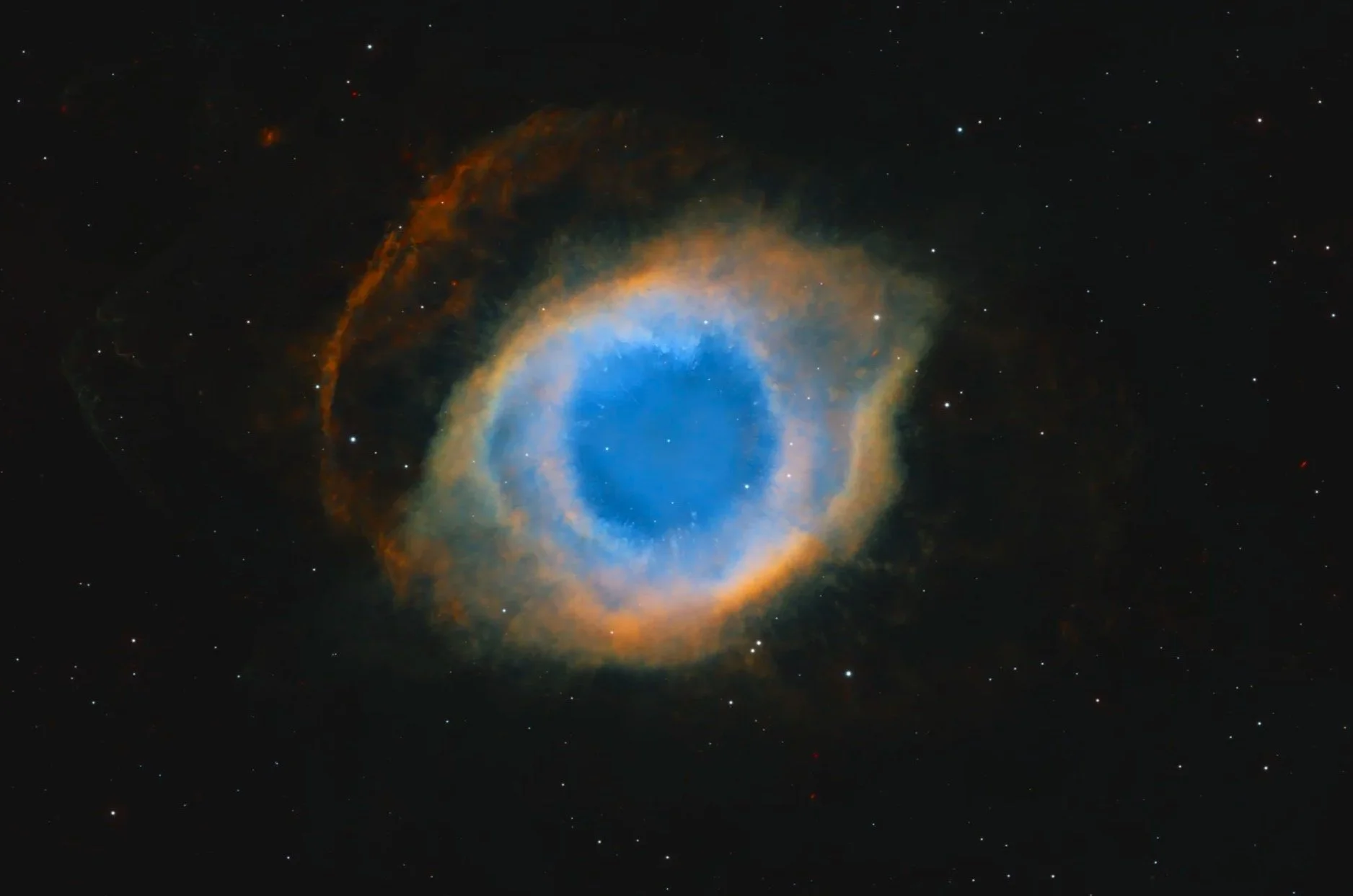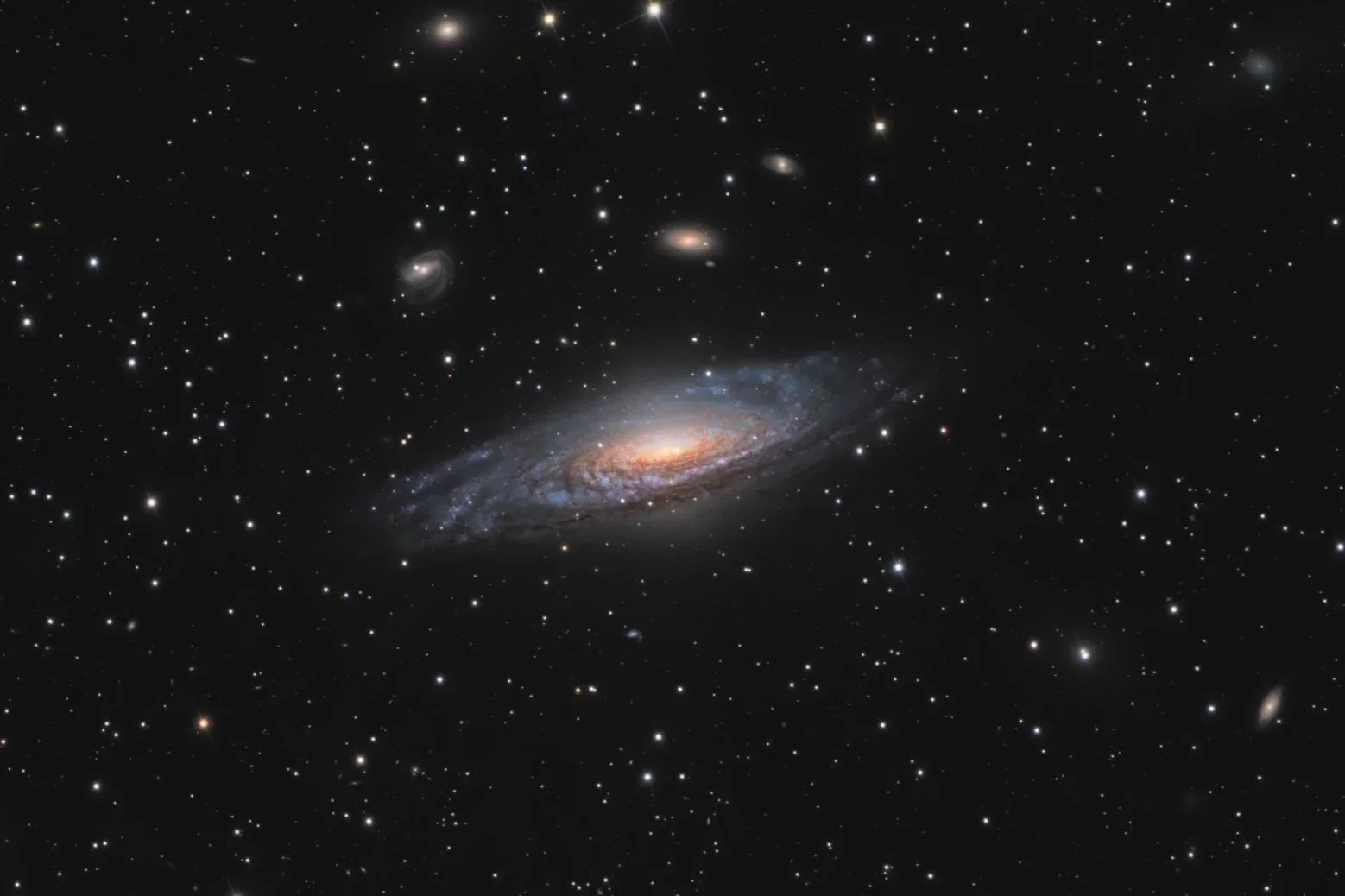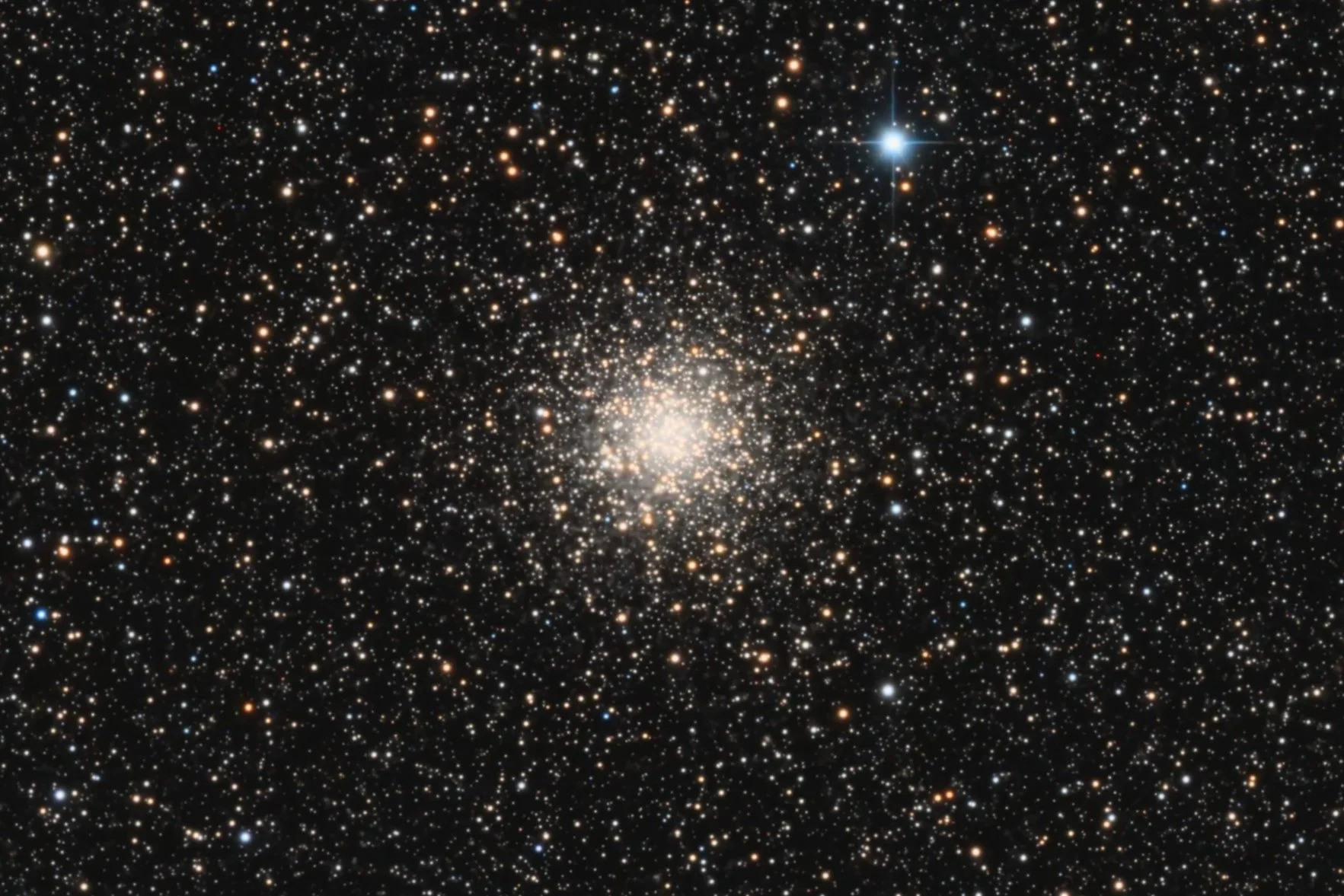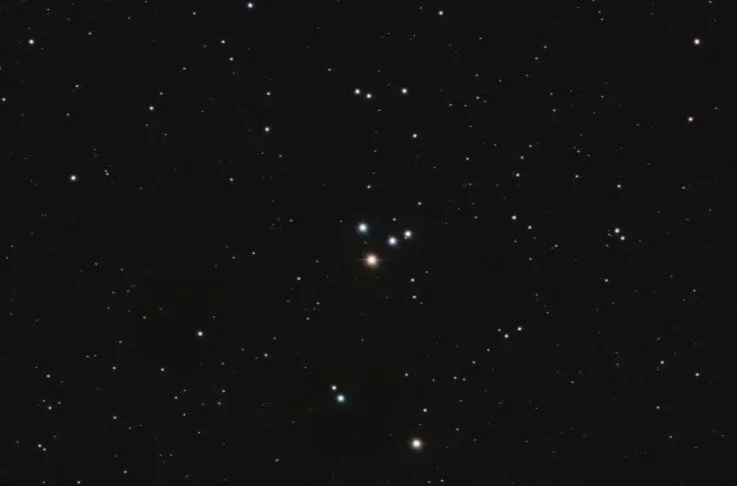
Images
Arp273
Arp 273 is a pair of interacting galaxies, 300 million light years away in the constellation Andromeda. The larger of the spiral galaxies, known as UGC 1810, is about five times more massive than the smaller galaxy, known as UGC 1813. It is thought that the smaller galaxy has actually passed through the larger one.
Sh2-231 | Sh2-233 | Sh2-235
A large HII region in the constellation Auriga contains four distinct Sharpless objects. Three of those (Sh2-231, Sh2-233 and Sh2-235) are imaged here. Sh2-235 is by far the brightest nebula in the area and shows a tiny bit of OIII signal in the nucleus. The other two objects are more typical Ha clouds.
Caldwell 1
Caldwell 1, also known as NGC 188 or the Polarissima Cluster, is an open cluster in the constellation Cepheus. It was discovered by John Herschel in 1825. Unlike most open clusters, NGC 188 lies far above the plane of the galaxy and is one of the most ancient of open clusters known, at approximately 6.8 billion years old.
Caldwell 63
Caldwell 63, also known as NGC 7293 or the Helix Nebula, is a planetary nebula (PN) located in the constellation Aquarius. Discovered by Karl Ludwig Harding, most likely before 1824, this object is one of the closest of all the bright planetary nebulae to Earth. The distance, measured by the Gaia mission, is 655±13 light-years. Its age is estimated to be 10600 years. It is similar in appearance to the Cat's Eye Nebula and the Ring Nebula.
Caldwell 15
Caldwell 15, also known as NGC 6826 is a planetary nebula located in the constellation Cygnus. It is commonly referred to as the "Blinking Planetary". A distinctive feature of this nebula are the two bright patches on either side, which are known as Fast Low-Ionization Emission Regions, or FLIERS. They appear to be relatively young, moving outwards at supersonic speeds. Caldwell 15 is located at approximately 2000 lightyears from Earth.
Caldwell 51
Caldwell 51, also known as IC 1613, is an irregular dwarf galaxy located on the outskirts of the Local group (the galaxy ground that includes our Milky Way) in the constellation of Cetus. Caldwell 51 was discovered in 1906 by Max Wolf, and is approaching Earth at 234 km/s.
M75
Messier 75 is a globular cluster in the constellation Sagittarius. It was discovered by Pierre Méchain in 1780 and included in Charles Messier's catalog that same year. M75 is about 67,500 light years away from Earth and is 14,700 light years away from, and on the opposite side of, the Galactic Center. Messier 75 is part of the Gaia Sausage, the hypothesised remains of a dwarf galaxy that merged with the Milky Way.
Caldwell 43
Caldwell 43 (also known as NGC 7814 or UGC 8) is a spiral galaxy about 40 million light-years away in the constellation Pegasus. The galaxy is seen edge-on from Earth. It is sometimes referred to as "the little sombrero", a miniature version of Messier 104. The star field behind NGC 7814 is known for its density of faint, remote galaxies. It's among the few bright galaxies that exhibit modest distortion and twisting of the galaxy's plane in optical wavelengths.
M72
Messier 72 is a globular cluster in the south west of the constellation of Aquarius. M72 was discovered by astronomer Pierre Méchain in 1780. Charles Messier looked for it 36 days later, and included it in his catalog. The cluster is approximately 55,000 lightyears away from the Sun. It has an estimated combined mass of 168,000 solar masses and is around 9.5 billion years old.
Arp77
Arp77 consists of the larger barred spiral galaxy NGC 1097 and its smaller companion, the elliptical galaxy NGC 1097A. Located approximately 45 million light-years away in the constellation Fornax, these galaxies are engaged in a gravitational interaction that has visibly distorted their structures. NGC 1097, classified as a Seyfert galaxy, hosts an active galactic nucleus powered by a supermassive black hole, while the interaction with NGC 1097A has sparked intense starburst activity and created a striking ring of star formation around its core.
M30
Messier 30 (also known as NGC 7099 or the Jellyfish Cluster) is a globular cluster in the constellation of Capricornus. M30 is centred 27,100 light-years away from Earth and is about 93 light-years across. The estimated age is roughly 12.9 billion years. M30 makes one of the highest density regions in the Milky Way galaxy.
Sh2-132
Sh2-132, also known as the Lion Nebula, is an emission nebula situated in the constellation Cepheus. The nebula spans approximately 150 light-years and is located at an estimated distance of 10,400 light-years from Earth. Its structure features intricate filaments and patches of glowing gas, typical of regions where stellar winds and ultraviolet radiation interact with the surrounding interstellar medium.
M55
Messier 55, also known as NGC 6809, or Specter Cluster, is a globular cluster in the south of the constellation Sagittarius. It was discovered by Nicolas Louis de Lacaille in 1752 while observing from what today is South Africa. Charles Messier observed and catalogued it in 1778. M55 is about 17,600 light-years away from Earth. It contains about 269,000 solar masses (M☉).
Caldwell 30
Caldwell 30, also known as NGC 7331, is an unbarred spiral galaxy about 43.79 million light-years away in the constellation Pegasus. It was discovered by William Herschel on 6 September 1784. The galaxy appears similar almost in size and structure to the Milky Way, and is sometimes referred to as "the Milky Way's twin".
M25
Messier 25, also known as IC 4725, is an open cluster of stars in the southern constellation of Sagittarius. It was first discovered by Philippe Loys de Chéseaux in 1745 and it was included in Charles Messier's list of nebulous objects in 1764. M25 is at a distance of about 2,000 light-years away from Earth and is 67.6 million years old.
Caldwell 19 | Sh2-125
Caldwell 19, or the Cocoon nebula, is a well known reflection/emission nebula in the constellation Cygnus. It is also member of the Sharpless II catalogue. The nebula is about 4,000 light-years away from us and the central star that ionises the surrounding gas is approximately 100,000 years old.
M73
Messier 73, also known as NGC 6994, is an asterism in the constellation Aquarius. For a long time it was thought to be a small open cluster, but detailed analysis in 2002 revealed that the stars had no direct relationship to each other and just happened to look like they were standing close together from our line of sight.
Sh2-135
Sharpless 2-135 is a faint emission nebula located in the constellation Cepheus, approximately 4,500 light-years from Earth. The nebula appears as a diffuse, reddish cloud, though it is relatively faint compared to neighbouring nebulae such as the Bubble Nebula (NGC 7635). It lies in a region rich with other notable nebulae, including Sh2-136 (the "Ghost Nebula") and Sh2-137.




















